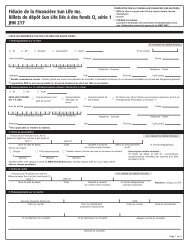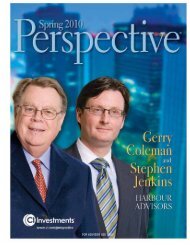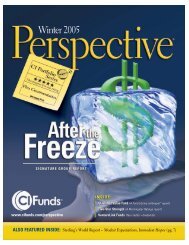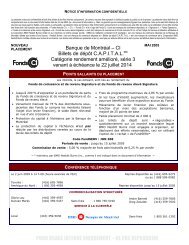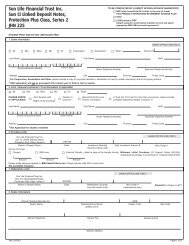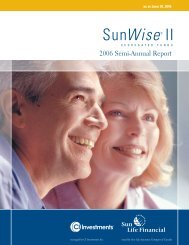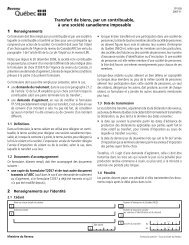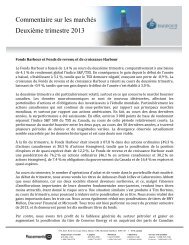July - Summer Edition - CI Investments
July - Summer Edition - CI Investments
July - Summer Edition - CI Investments
Create successful ePaper yourself
Turn your PDF publications into a flip-book with our unique Google optimized e-Paper software.
Book reviews<br />
Malcolm White<br />
Vice-President Portfolio Management<br />
and Portfolio Manager<br />
Signature Global Advisors<br />
What I plan to read this summer<br />
And the Money Kept Rolling In (and Out): Wall Street, the<br />
IMF, and the bankrupting of Argentina by Paul Blustein<br />
Public Affairs, 320 pages<br />
I bought this book in 2003 and recently dusted it off again.<br />
Given the Greek situation, this book is especially relevant and<br />
shows why – in my opinion – Greece will default, devalue its<br />
currency and go back to the drachma.<br />
In the 1990s, few countries were more<br />
lionized than Argentina for its efforts<br />
to join the club of wealthy nations.<br />
Argentina’s policies drew enthusiastic<br />
applause from the IMF, the World Bank<br />
and Wall Street. But the club has a<br />
disturbing propensity to turn its back on<br />
arrivistes and cast them out. That was what happened in<br />
2001, when Argentina suffered one of the most spectacular<br />
crashes in modern history. With it came appalling social<br />
and political chaos, a collapse of the peso, and a wrenching<br />
downturn that threw millions into poverty and left nearly<br />
one-quarter of the workforce unemployed.<br />
– Public Affairs<br />
The best book I’ve read in the past year<br />
The Age of Entanglement: When Quantum Physics<br />
Was Reborn by Louisa Gilder<br />
Alfred A. Knopf, 443 pages<br />
Entanglement is the strange property of physics where two<br />
particles can be synced and communicate over vast distances.<br />
Einstein never really believed in the principle – which would<br />
infer faster than light speeds – but entanglement has been<br />
shown to work and is at the heart of new advances in quantum<br />
computing and communications.<br />
This book offers an easy-to-read account of the history and<br />
physics behind the science.<br />
The first quarter of the 20 th century<br />
produced two theories, relativity and<br />
quantum mechanics, that are still<br />
changing our universe.<br />
With special relativity, Albert Einstein<br />
upended the long-understood meaning<br />
of time, space and simultaneity. With general relativity,<br />
he swapped Newton’s law of gravity based on force for<br />
curved space¬time, and cosmology became a science. Just<br />
after World War I, relativity made front-page news when<br />
astronomers saw the Sun bend starlight. Overnight, Einstein<br />
became famous as no physical scientist before or since, his<br />
theory the subject of poetry, painting and architecture.<br />
Then, with the development of quantum mechanics in the<br />
1920s, physics got really interesting. Quantum physics<br />
was a theory so powerful – and so powerfully weird – that<br />
nearly a century later, we’re still arguing about how to<br />
reconcile it with Einsteinian relativity and debating what it<br />
tells us about causality, locality and realism.<br />
– New York Times<br />
SUMMER 2011 PERSPECTIVE AS AT JUNE 30, 2011 13





